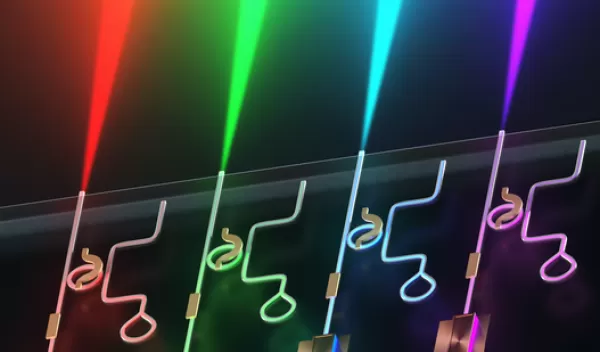
High-performance visible-light lasers that fit on a fingertip
As technologies keep advancing at exponential rates and demand for new devices rises accordingly, miniaturizing systems into chips has become increasingly important. Microelectronics has changed the way electricity is manipulated, enabling sophisticated electronic products that are now an essential part of our daily lives.
Similarly, integrated photonics has been revolutionizing the way we control light for applications such as data communications, imaging, sensing and biomedical devices. By routing and shaping light using microscale and nanoscale components, integrated photonics shrinks full optical systems into the size of tiny chips.
Despite its success, integrated photonics has been missing a key component to achieve complete miniaturization: high-performance chip-scale lasers. While some progress has been done on near-infrared lasers, the visible-light lasers that currently feed photonic chips are still benchtop and expensive. Since visible light is essential for a wide range of applications including quantum optics, displays and bioimaging, there is a need for tunable and narrow-linewidth chip-scale lasers emitting light of different colors.
Researchers at Columbia University and other institutions, including the Cornell NanoScale Science and Technology Facility, have created visible lasers of very pure colors from near-ultraviolet to near-infrared that fit on a fingertip. The colors of the lasers can be precisely tuned and extremely fast — up to 267 petahertz per second, critical for applications such as quantum optics. The team is the first to demonstrate chip-scale narrow-linewidth and tunable lasers for colors of light below red — green, cyan, blue and violet.
These inexpensive lasers also have the smallest footprint and shortest wavelength of any tunable and narrow-linewidth integrated laser emitting visible light. The U.S. National Science Foundation-supported study was published in the journal Nature Photonics.
The researchers, who have filed a provisional patent for their technology, are exploring how to optically and electrically package the lasers to turn them into standalone units and use them as sources in chip-scale visible light engines, quantum experiments and optical clocks.
